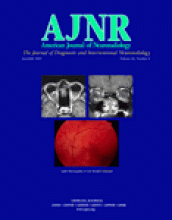Abstract
BACKGROUND AND PURPOSE: Persistent generalized status epilepticus (SE) is associated with alterations of cerebral perfusion (CP). Because perfusion-weighted MR imaging (PWI) allows noninvasive CP-determination, the aim of this study was to investigate CP alterations during acute experimental SE correlated with SE-induced neuronal cell loss.
METHODS: The rat pilocarpine model was used to induce SE. Multilocal PWI was performed before (baseline) and 3, 15, 30, 60, and 120 minutes after onset of SE. Bolus-peak ratio (BPR) was calculated for the retrosplenial and piriform cortex, hippocampus, amygdala, and thalamus and compared with baseline. Neuronal cell loss was quantified at different time points after induction of SE by cresyle violet staining.
RESULTS: Immediately after SE onset (3 minutes), BPR temporarily increased to 102%–130% in all regions, with a maximum in the amygdala (129 ± 16%) and hippocampus (130 ± 21%). At 15, 30, and 60 minutes, BPR decreased continuously to 57%–76%. BPR values <55% in the parietal and/or temporal cortex resulted in death. In surviving animals, BPR recovered to 66%–79% and there was a good correlation between neuronal cell loss in specific brain regions at 2 weeks after SE onset and maximal decrease in BPR (r > 0.73).
CONCLUSION: PWI demonstrated a transient cerebral hyperperfusion immediately after SE onset, followed by a significant continuous decline to different perfusion levels. In our experimental setting, a decline of cortical BPR below 55% of baseline seems to be a prognostic threshold value associated with subsequent death. In surviving animals, there is good correlation between the maximal decrease in BPR in the acute phase of SE and late neuronal cell loss.
- Copyright © American Society of Neuroradiology












